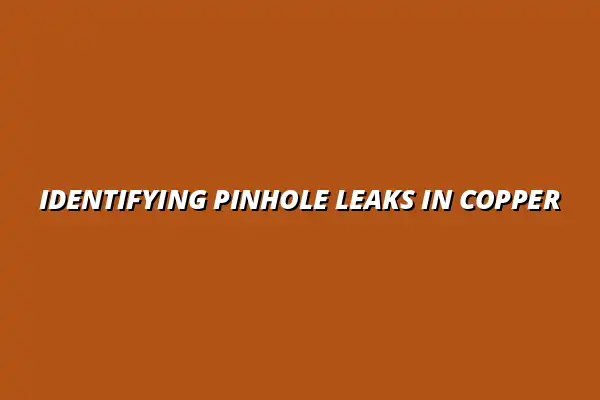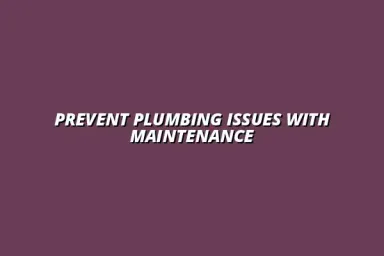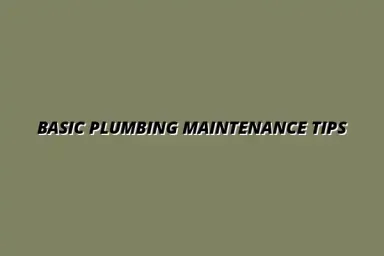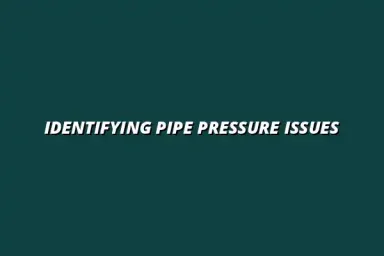Understanding Pinhole Leaks in Copper Pipes
Pinhole leaks in copper pipes can be a frustrating issue for homeowners. These small leaks can appear suddenly and often go unnoticed until they cause significant damage. Understanding what these leaks are, their causes, and how to spot them early can save you time and money in repairs.
Identifying the signs of pinhole leaks in your plumbing is essential for maintaining the integrity of your home. Knowing what to look for can help you react quickly and prevent further damage. This section will cover the definition of pinhole leaks, their common causes, and why early detection is crucial. For more information on detecting hidden leaks, check out this helpful guide on detecting hidden pipe leaks at home.
Defining Pinhole Leaks in Plumbing
A pinhole leak is a small hole that develops in the copper pipes used in plumbing systems. These leaks can produce tiny streams of water, which may not be immediately visible. While they might seem minor, they can lead to significant issues if left unaddressed.
These leaks often occur in areas where the copper pipe has experienced corrosion. Unlike larger leaks, pinhole leaks can be tricky to detect, and many homeowners may not recognize them until they start noticing water damage in their homes.
What is a Pinhole Leak?
A pinhole leak is typically defined as a hole that measures less than one millimeter in diameter. They can occur due to various reasons, including:
- Corrosion: Over time, copper can corrode due to factors like water chemistry and flow.
- Mechanical Stress: Pressure from other plumbing elements can weaken the pipes.
- Manufacturing Defects: Flaws during the production process can lead to vulnerabilities.
Identifying pinhole leaks early can help prevent further complications in your plumbing system. Once you understand what they are, you can look out for the signs that might indicate a problem. Regular plumbing maintenance, as described in this article on essential plumbing maintenance for homes, can help prevent many issues.
Common Causes of Pinhole Leaks in Copper Pipes
Pinhole leaks can arise from various sources. Understanding these causes can help you take preventive measures. Here are some of the most common reasons:
- Corrosive Water: Water with high acidity or chlorine levels can eat away at copper pipes.
- High Water Pressure: Excessive pressure can strain the pipes, leading to leaks.
- Environmental Factors: Soil conditions, especially in areas with high moisture, can promote corrosion.
By knowing these causes, you can take steps to minimize your risk of developing pinhole leaks in your plumbing. This is crucial for maintaining a healthy plumbing system and avoiding costly repairs later on. For instance, understanding the causes and fixes for water heater leaks can be very helpful.
The Importance of Identifying Pinhole Leaks Early
Identifying pinhole leaks early is crucial for several reasons. First, it allows homeowners to address problems before they escalate. Second, it can save you money by preventing extensive repairs caused by water damage.
Being proactive about your plumbing can help maintain your home’s integrity and save you from headaches down the road. Let’s explore the potential damage and cost implications of untreated leaks. Regular checks, particularly in areas like the kitchen (repairing a leaky kitchen sink) and bathroom (essential bathroom plumbing checks), are essential.
Potential Damage from Untreated Leaks
If left untreated, pinhole leaks can lead to serious issues, such as:
- Mold Growth: Moisture from leaks can cause mold and mildew to flourish.
- Structural Damage: Prolonged leaks can weaken walls, ceilings, and floors.
- Increased Repair Costs: What starts as a small leak can lead to much bigger problems.
Understanding these potential damages highlights the importance of early detection and prompt action. You definitely don't want to face the consequences of waiting too long!
Cost Implications of Repairing Hidden Water Damage
Repairing the damage caused by untreated pinhole leaks can be very expensive. Depending on the severity of the damage, costs can quickly add up. Here are some typical expenses associated with hidden water damage:
- Repairing Walls and Ceilings: Damage from leaks often requires replacing drywall or plaster.
- Flooring Replacement: Water can damage floors, leading to costly replacements.
- Mold Remediation: If mold forms, you may need professional help to remove it.
Being aware of these potential costs can motivate homeowners to be vigilant about their plumbing systems. Early detection truly pays off in the long run! Understanding the causes of bursting pipes, as explained in this article on causes of bursting water pipes, can help you prevent more serious problems.
Signs Indicating a Pinhole Leak in Your Copper Pipes
Recognizing the signs of pinhole leaks is essential for maintaining your plumbing system. By being observant, you can catch problems before they escalate and save yourself from costly repairs. Let’s dive into some key indicators that might suggest a pinhole leak.
There are several signs to watch for when checking your plumbing:
Visual Indicators of Water Damage
Water stains on walls, ceilings, and floors can indicate a hidden leak. Look for:
- Discoloration: Yellow or brown spots may appear where water has seeped through.
- Peeling Paint or Wallpaper: Excess moisture can cause finishes to bubble or peel.
- Warped Flooring: Wood or laminate floors may buckle or warp if exposed to water.
Identifying these visual signs can help you act quickly to resolve the issue, protecting your home from further damage.
Unexpected Increases in Your Water Bill
Another clear indicator of a potential pinhole leak is an unexpected spike in your water bill. If you haven't changed your water usage habits, a sudden increase can point to a hidden leak. This can be a huge red flag!
Monitoring your water bill regularly can help you spot these unusual changes. It's always wise to take action if you observe a significant increase that doesn't correlate with your usage.
Unusual Sounds from the Pipes
Listening to your plumbing can also provide helpful clues about potential leaks. If you hear:
- Dripping Sounds: This might indicate a leak somewhere in your pipes.
- Gurgling Noises: Air trapped in pipes can signal that there's an issue.
- Whistling or Hissing: These sounds may mean that water is escaping from a pinhole leak.
Being attentive to the sounds your plumbing makes can help you detect problems before they escalate. Regular checks can save you time and money!
Addressing Frequently Asked Questions about Pinhole Leaks
What Should I Do If I Suspect a Pinhole Leak?
If you think there might be a pinhole leak in your copper pipes, acting quickly is crucial. The first step is to turn off the water supply to prevent further damage. This can help minimize any water loss and keep your home dry while you figure out what to do next!
Next, take a moment to assess the situation. Look for signs of water damage or visible leaks. If you can spot damp areas, these might be clues to the leak's location. Keep in mind that sometimes, the source of the leak might not be immediately visible!
- Turn off the main water supply.
- Inspect for visible signs of water damage.
- Document the areas where you notice issues.
Finally, it may be time to call a professional plumber if the problem persists or if you're unable to locate the source. They have the tools and expertise to address the issue more effectively than a DIY approach. For plumbing services in Billesley, Birmingham, consider checking out this plumber in Billesley, Birmingham.
How Can I Prevent Pinhole Leaks in the Future?
Preventing pinhole leaks in your plumbing system is easier than you might think! Regular maintenance and being mindful of your plumbing can go a long way. Start by understanding how the conditions in your home can affect your pipes.
One simple way to prevent these leaks is to keep an eye on your water quality. High levels of chlorine, acidic water, or even hard water can contribute to corrosion. Treating your water can help protect your pipes for the long haul!
- Schedule regular plumbing inspections.
- Monitor water quality and treat accordingly.
- Insulate pipes to prevent temperature fluctuations.
Choosing high-quality materials for any plumbing work can also help mitigate the risk of leaks. Invest in good pipes and fittings to keep your plumbing system in top shape!
Long-Term Considerations and Final Thoughts on Pinhole Leak Management
Evaluating Repair Options for Pinhole Leaks
When it comes to repairing pinhole leaks, you have several options. It's important to think about whether you want a quick fix or a more permanent solution. Temporary fixes like using pipe sealants can work in a pinch but may not solve the problem for long.
On the other hand, permanent solutions may involve replacing sections of your pipes or using more durable materials. This might seem more expensive initially, but it can save you money in the long run by avoiding future leaks!
- Temporary fixes: sealants, tape, or clamps.
- Permanent solutions: pipe replacement or upgrades.
- Consider your budget and long-term plumbing health.
Think about the factors influencing repair costs, such as the extent of damage and the materials needed. Understanding these factors can help you make informed decisions.
Building a Proactive Approach to Plumbing Maintenance
To keep your plumbing system healthy, it's wise to establish a regular inspection schedule. This means checking for any signs of wear and tear on your pipes and addressing issues before they escalate into something more serious. Consistent check-ups can save you from costly repairs down the line!
Educating yourself and your family about plumbing health is equally important. Knowing what signs to look for can help everyone be more aware and proactive in maintaining the plumbing system. Working together as a family can ensure your home stays dry and comfortable!
- Set reminders for regular inspections.
- Teach family members about signs of leaks.
- Encourage open communication about plumbing issues.
By taking these proactive steps, you can help prevent future pinhole leaks and ensure your plumbing system remains in great condition! Remember, a little effort today can lead to big savings tomorrow.

 Kiran Almasi
Kiran Almasi

